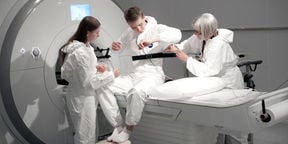Environmental electronics

For example, a fiber optic sensor unit of 800 measurement channels for fine scale measurement of photosynthetically active radiation and measuring mast of 200 sensors have been designed. Their use and benefits in ecological studies are being analysed. Magnetic resonance imaging based method for studies of water dynamics in trees are being studied and developed. For example a D2O/H2O-contrast-method has been invented to measure the flow velocity and the dependence of the flow velocity on the size of the water conducting tracheids.
A study has recently been started to develop an electron paramagnetic resonance (EPR) –based method for studies of plant physiology dynamics. The goal is a novel EPR-based experimental set up, which can be used to measure plant responses to environmental variables such as the quality and quantity of incoming radiation. The measured signal is originated from the proportions of unstable species such as chlorophyll triplets. Due to the immediate and direct detection of the photosynthetic response, the method would allow studies of plant physiology dynamics with superior effectiveness compared to the previous methods.
The research group has founded the Advanced Magnetic Imaging Centre (AMI) of the Aalto University. It facilitates a possibility to use MRI. The AMI Centre has a new 3-Tesla Siemens Skyra MRI Scanner and stateof-the-art stimulators and monitoring devices, and both third-party and in-house constructed data-analysis and visualisation software. The group has a 0,1 T resistive MRI unit which is used for educational and research activities. Facilities for electronics and mechatronics prototyping are in group’s possession.
Leader of the research group is Professor Pekka Eskelinen.
- Published:
- Updated: